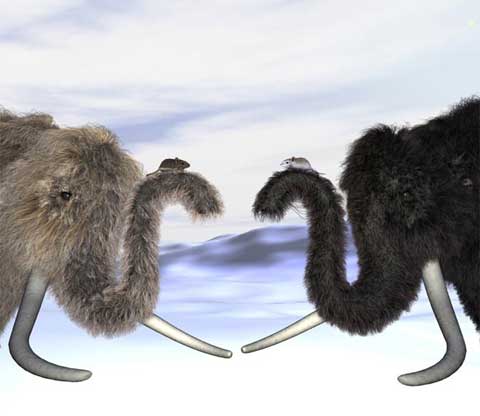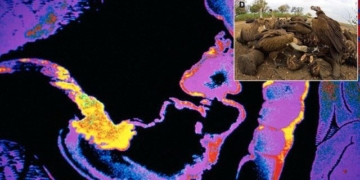The fur coat of prehistoric giant mammals has been identified by scientists. Some animals had curly hair with a dark brown hue, while others had lighter or yellowish shades.
This information was gathered from a woolly mammoth skeleton that lived 43,000 years ago in Siberia, using the latest genetic technology.

Woolly mammoths had both light and dark fur (Photo: LiveSciences)
Researchers have indicated that a gene called Mc1r plays a significant role in determining the fur color of these ancient beasts.
Woolly mammoths possessed two versions of the Mc1r gene. These versions differ in just three amino acids (or “letters” of DNA), resulting in one variant being partially active while the other is fully active.
Mammoths with the partially active Mc1r variant would have lighter fur, while those with the fully active variant would have darker fur.
The Mc1r gene is also responsible for fur color in some modern animals. In humans, a less active Mc1r gene leads to red hair, while in dogs, mice, and horses, it is responsible for yellow fur.
This discovery was made by Holger Rompler from Leipzig University in Germany.
Unlike humans, the fur of woolly mammoths may not have turned “gray” with age. “Most mammals do not gray as they get older. We do not really know why humans do.”
Woolly mammoths went extinct about 10,000 years ago. Scientists are uncertain whether climate conditions or human hunting led to their demise. Some experts suggest using DNA to resurrect this giant species.
T. An


















































